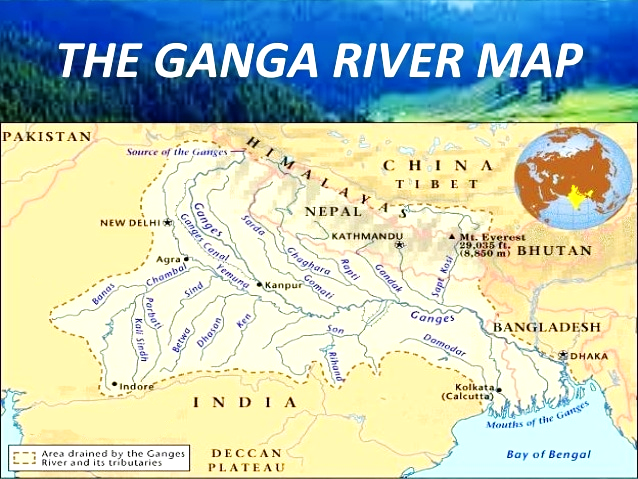Infographics
Indian Polity
Private Member’s Bill on Election Commission
For Prelims: Election Commission of India (ECI), Article 324, Consolidated Fund of India, Inner Party Democracy
For Mains: Powers and Responsibilities of the Election Commission
Why in News?
Recently, a private member’s Bill was introduced in Lok Sabha seeking to make Election Commission (EC) of India responsible for regulating and monitoring the internal operations of political parties in the country.
- The bill comes at a time when the Supreme Court is hearing petitions on the need for reforms in the appointment of Chief Election Commissioner (CEC) and the Election Commissioners (ECs).
- It was argued that the internal functioning and structures of a large number of political parties have become very “opaque and ossified” and there is a need to make their functioning transparent, accountable and rule based.
What is a Private Member’s Bill?
- Any Member of Parliament (MP) who is not a minister is referred to as a private member. A Private Member issues a Private Member’s Bill.
- The purpose of the private member’s bill is to draw the government’s attention to what individual MPs see as issues and gaps in the existing legal framework, which require legislative intervention.
- Thus, it reflects the stand of the opposition party on public matters.
- Its introduction in the House requires one month’s notice and can be introduced and discussed only on Fridays.
- Its rejection by the House has no implication on the parliamentary confidence in the government or its resignation.
- The last time a private member’s bill was passed by both Houses was in 1970.
- It was the Supreme Court (Enlargement of Criminal Appellate Jurisdiction) Bill, 1968.
What are the Highlights of the Bill?
- On Appointment of CEC:
- It also seeks the members of the EC, including the Chief Election Commissioners, to be appointed by a panel consisting of the Prime Minister, Union Home Minister, Leader of Opposition or floor leader in Lok Sabha, Leader of Opposition or floor leader in Rajya Sabha, the Chief Justice of India and two senior most judges of the Supreme Court.
- Tenure for CEC:
- The Bill envisages a fixed tenure of six years for the CEC and EC and three years from the date of appointment for the Regional Commissioners.
- Removal Procedure for CEC:
- They should not be removed from office except in accordance with the procedure laid down for the removal of a SC Judge.
- Also, after retirement, they should not be eligible for any reappointment to any office under the Government of India, State Governments and the Constitution.
- Procedure in Case of Non-Compliance:
- If any registered political party fails to comply with the advisories, duration and instructions issued by the ECI with regard to their internal functions, the recognition of such political party as a State or National may be withdrawn including any other action as the Election Commission deems fit under section 16A of the Election Symbols (Reservation and Allotment) Order 1968.
What is the Structure of the ECI?
- Originally the commission had only one Election Commissioner but after the Election Commissioner Amendment Act 1989, it has been made a multi-member body.
- The commission consists of one CEC and two ECs.
- The President of India appoints CEC and ECs. They have a fixed tenure of 6 years, or up to the age of 65 years, whichever is earlier.
- They also enjoy the same status and receive salary and perks as available to Judges of the SC.
What are the Powers and Responsibilities of the ECI?
- Determining the Electoral Constituencies’ territorial areas throughout the country.
- Preparing and periodically revising electoral rolls and registering all eligible voters.
- Notifying the schedules and dates of elections and scrutinising nomination papers.
- Granting recognition to the various political parties and allocating them election symbols.
- The Commission also has advisory jurisdiction in the matter of post-election disqualification of sitting members of Parliament and State Legislatures.
- It is also responsible for conducting bye-elections in any constituency whenever the need arises.
- It issues the Model Code of Conduct (MCC) in elections for political parties and candidates to avoid indulgence in unfair practice or arbitrary abuse of powers by those in power.
What are the Recent Issues Related to the Election Commission?
- Truncated Tenure of CEC: The SC has recently pointed out that “No Chief Election Commissioner has completed a six-year tenure since 2004”, and because of the truncated tenure, the CEC is unable to do anything substantial.
- Article 324 of the Indian Constitution talks about the appointment of ECs, however, it only envisages the enactment of a law to this effect and does not lay down any procedure for these appointments.
- Executive Influence in Appointment: The ECs are appointed by the current government and are therefore potentially obligated to the government or may feel that they are held to a specific level of loyalty.
- Dependence on Centre for Finance: Despite several provisions designed to make the ECI an independent body, the Union Government still controls its finances. The expenses of EC are not charged on the Consolidated Fund of India.
- Lack of Independent Staff: Because ECI does not have its own staff, it has to rely on staff from Central and State Governments whenever elections are held.
- Limited Power to Regulate Inner-Party Democracy: The ECI is limited to advising parties on internal elections and has no authority to enforce inner-party democracy or regulate party finances.
Way Forward
- Various committees like Justice Tarkunde Committee (1975), Dinesh Goswami committee (1990), Law Commission (2015) have recommended that Election Commissioners be appointed on the advice of a committee comprising the PM, the Lok Sabha Opposition Leader and the CJI.
- Equal Constitutional protection should be given to all members of the ECI in matters of removability from office. Bringing in a dedicated election management cadre and personnel system is need of the hour.
UPSC Civil Services Examination, Previous Year Questions (PYQs)
Prelims
Q. Consider the following statements: (2017)
- The Election Commission of India is a five-member body.
- The Union Ministry of Home Affairs decides the election schedule for the conduct of both general elections and bye-elections.
- Election Commission resolves the disputes relating to splits/mergers of recognised political parties.
Which of the statements given above is/are correct?
(a) 1 and 2 only
(b) 2 only
(c) 2 and 3 only
(d) 3 only
Ans: (d)
- According to theArticle 324 of the Indian Constitution, the Election Commission of India is an autonomous constitutional authority responsible for administering Union and State election processes in India. The body administers elections to the Lok Sabha, Rajya Sabha, State Legislative Assemblies in India, and the offices of the President and Vice President in the country.
- Originally the Commission had only one Chief Election Commissioner. It currently consists of a Chief Election Commissioner and two Election Commissioners. Hence, statement 1 is not correct.
- The Commission is vested with quasi-judicial power to settle disputes relating to splits/ mergers of recognised political parties. Hence, statement 3 is correct.
- It decides the election schedules for the conduct of elections, whether general elections or bye-elections. Hence, statement 2 is not correct. Therefore, option (d) is the correct answer.
Mains
Q. Discuss the role of the Election Commission of India in the light of the evolution of the Model Code of Conduct. (2022)

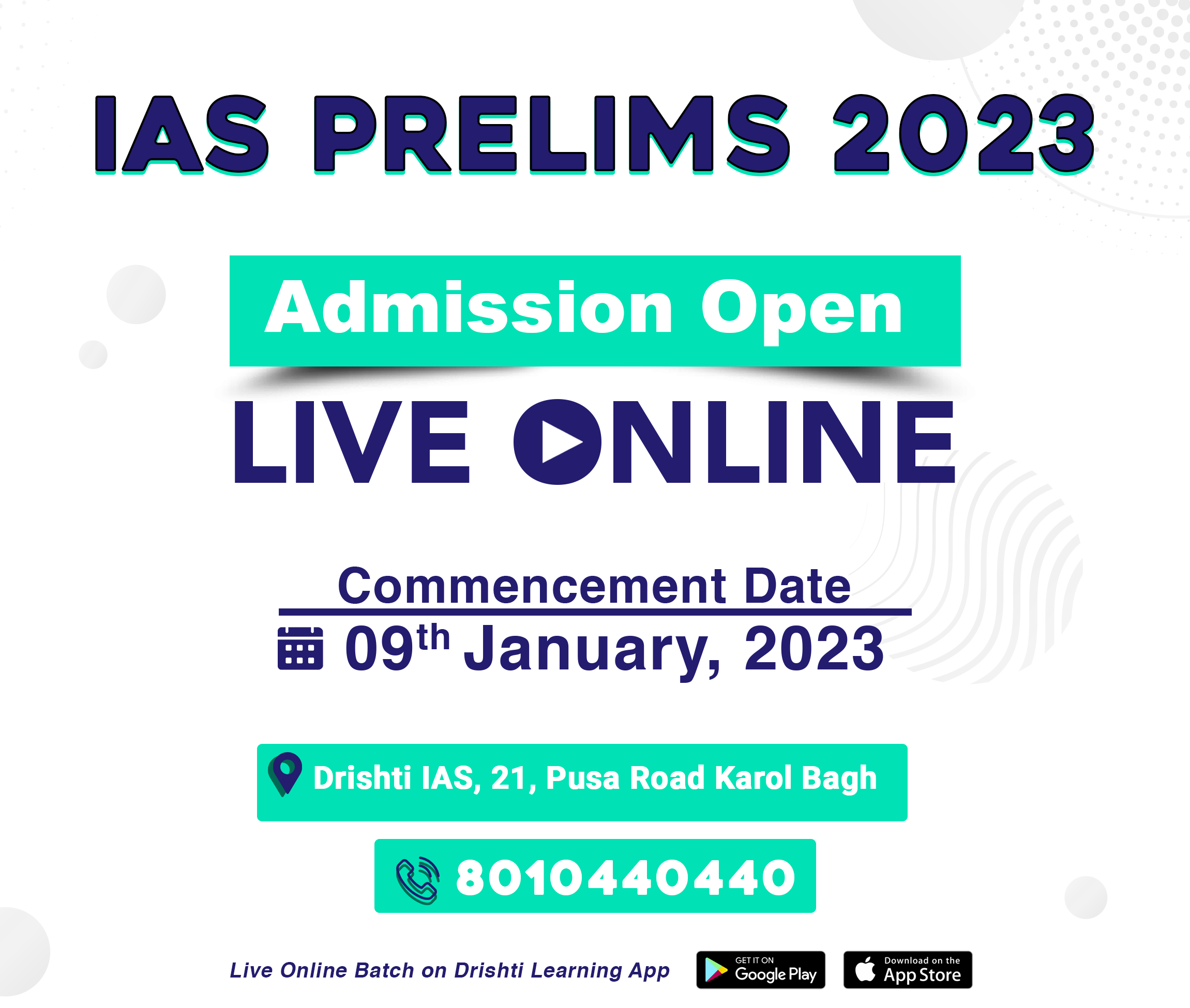
Social Justice
Raising Minimum Marriageable Age for Muslim Women
For Prelims: Raising Legal Age of Marriage for Women, Child Marriage, Jaya Jaitly task Force, Women’s Empowerment and Gender Parity.
For Mains: Issues with Minimum Marriage Ages
Why in News?
Recently, the Supreme Court asked the government to respond to a plea filed by the National Commission for Women (NCW) to raise the minimum age of marriage for Muslim women to be on par with persons belonging to other faiths.
What is the Legal Framework of Minimum Age for Marriage?
- Background:
- In India, the minimum age of marriage was prescribed for the first time by the law known as the Sarda Act, 1929. It was later renamed as the Child Marriage Restraint Act (CMRA), 1929.
- In 1978, the CMRA was amended to raise the minimum age of marriage to 18 years for girls and 21 years for boys.
- This position remains the same even in the new law called the Prohibition of Child Marriages Act (PCMA), 2006, which replaced the CMRA ,1929.
- Current:
- For Hindus, the Hindu Marriage Act, 1955 sets 18 years as the minimum age for the bride and 21 years as the minimum age for the groom.
- In Islam, the marriage of a minor who has attained puberty is considered valid.
- The Special Marriage Act, 1954 and the Prohibition of Child Marriage Act, 2006 also prescribe 18 and 21 years as the minimum age of consent for marriage for women and men, respectively.
- For the new age of marriage to be implemented, these laws are expected to be amended.
- In 2021, the Union Cabinet proposed to raise the legal age of marriage for women from 18 to 21 years.
What are the Issues with Underage Marriages of Women?
- Human Rights Violation: Child marriage violates girls’ human rights and makes them almost invisible to policy.
- Some of the basic rights that they get devoid of, include the Right to Education, Right to Rest and Leisure, Right to Protection from Mental or Physical Abuse including Rape and Sexual Exploitation.
- Disempowerment of Women: Since child brides are not able to complete their education, they remain dependent and underpowered which acts as a big hurdle towards achieving gender equality.
- Associated Health Issues: The costs of child marriage include teenage pregnancy and child stunting, population growth, poor learning outcomes for children and the loss of women’s participation in the workforce.
- The low domestic status of teenage wives typically condemns them to long hours of domestic labour, poor nutrition and anaemia, social isolation, domestic violence and lesser decision-making powers within the home.
- Poor education, malnutrition, and early pregnancy also lead to low birth weight of babies, perpetuating the intergenerational cycle of malnutrition.
Conclusion
- The current laws on marriage are age-centric and make no exception for children of any particular religion and the classification merely on the basis of ‘puberty’ has no scientific backing nor any reasonable nexus with the capacity to get married.
- A person who has attained puberty may be biologically capable of reproduction, however, the same does not imply that the said person is mentally or physiologically mature enough to engage in sexual acts and consequently, to bear children.

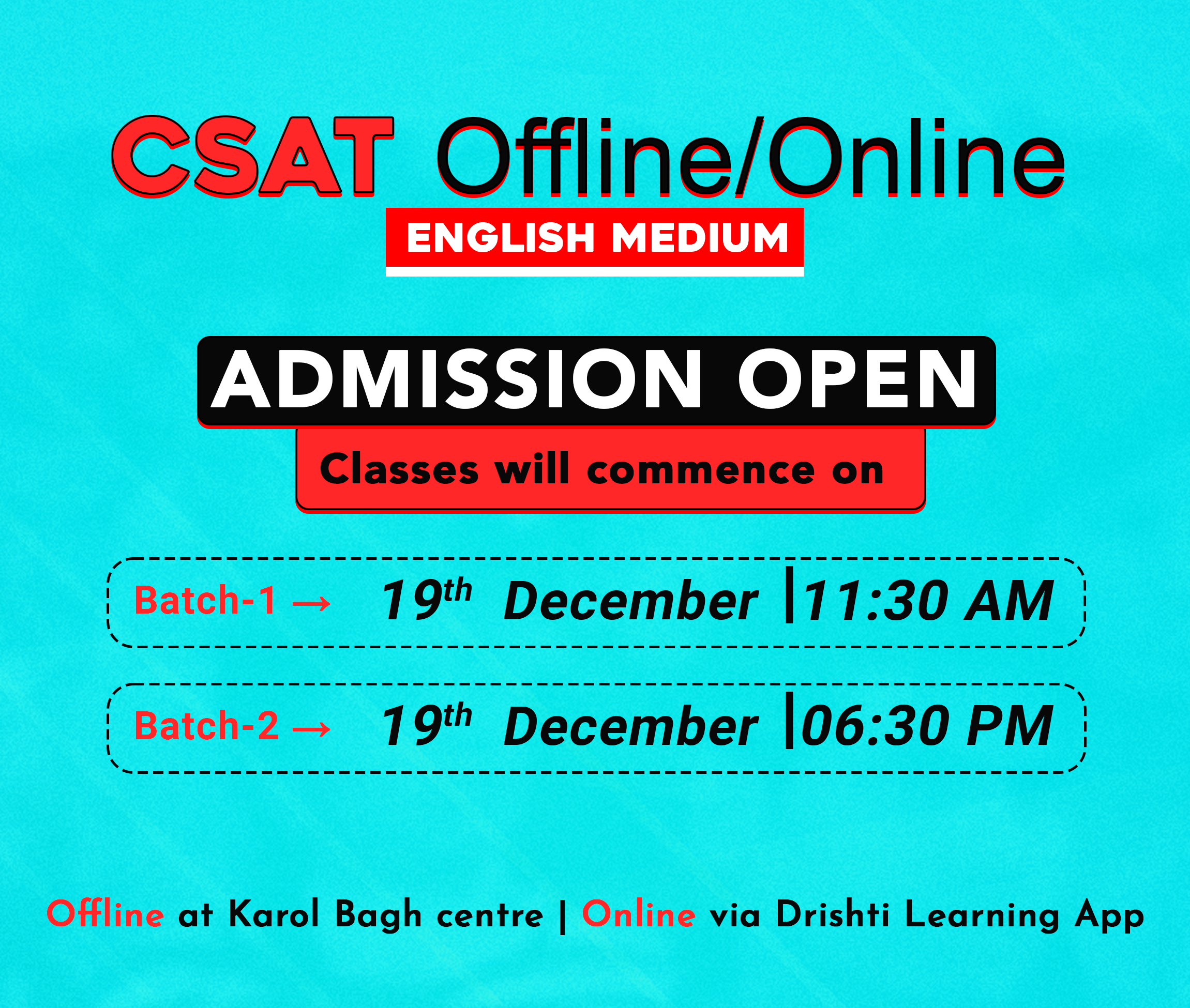
Science & Technology
End-to-End Encryption
Prelims: Cryptographic keys, Data Protection, Data Protection Laws.
Mains: Advantages and Disadvantages of End-to-End Encryption.
Why in News?
Recently, Apple has announced it will be increasing the number of data points protected by End-to-End Encryption (E2EE) on iCloud from 14 to 23 categories.
What is the Purpose of Announcing this?
- According to a data-breach-research by Apple, the total number of data breaches more than tripled between 2013 and 2021. Data of 1.1 billion personal records were exposed in 2021 alone.
- With end-to-end encryption, user data will be protected even in case data is breached in the cloud. The extra layer of protection would be valuable to targets of hacking attacks launched by well-funded groups.
What is End-to-End Encryption?
- About:
- End-to-end encryption is a communication process that encrypts data being shared between two devices.
- It prevents third parties like cloud service providers, internet service providers (ISPs) and cybercriminals from accessing data while it is being transferred.
- Mechanism:
- The cryptographic keys used to encrypt and decrypt the messages are stored on the endpoints.
- The process of end-to-end encryption uses an algorithm that transforms standard text into an unreadable format.
- This format can only be unscrambled and read by those with the decryption keys, which are only stored on endpoints and not with any third parties including companies providing the service.
- Usage:
- E2EE has long been used when transferring business documents, financial details, legal proceedings, and personal conversations.
- It can also be used to control users’ authorisation when accessing stored data.
- End-to-end encryption is used to secure communications.
- It is also used to secure passwords, protect stored data and safeguard data on cloud storage.
What are the Advantages of E2EE?
- Security in Transit:
- End-to-end encryption uses public key cryptography, which stores private keys on the endpoint devices. Messages can only be decrypted using these keys, so only people with access to the endpoint devices are able to read the message.
- Safety from Third Parties:
- E2EE ensures that user data is protected from unwarranted parties including service providers, cloud storage providers, and companies that handle encrypted data.
- Tamper-Proof:
- With E2EE, the decryption key does not have to be transmitted; the recipient will already have it.
- If a message encrypted with a public key gets altered or tampered within transit, the recipient will not be able to decrypt it, so the tampered contents will not be viewable.
- Compliance:
- Many industries are bound by regulatory compliance laws that require encryption-level data security.
- E2EE can help organizations protect that data by making it unreadable.
What are the Disadvantages of E2EE?
- Complexity in Defining the Endpoints:
- Some E2EE implementations allow the encrypted data to be encrypted and re-encrypted at certain points during transmission.
- This makes it important to clearly define and distinguish the endpoints of the communication circuit. If endpoints are compromised, encrypted data may be revealed.
- Too Much Privacy:
- Government and law enforcement agencies express concern that E2EE can protect people sharing illicit content because service providers are unable to provide law enforcement with access to the content.
- No Protection to Metadata:
- Although messages in transit are encrypted and impossible to read, information about the message - date of sending message and recipient, for instance - is still visible, which may provide useful information to an interloper.
What is the Legal Framework for Encryption in India?
- Minimum Encryption Standards:
- India does not have a specific encryption law. Although, a number of industry rules, such as those governing the banking, finance, and telecommunications industries, include requirements for minimum encryption standards to be utilised in protecting transactions.
- Prohibition on Encryption Technologies:
- Users are not authorised to employ encryption standards larger than 40 bits using symmetric key algorithms or similar methods without prior clearance and deposition of decryption keys, according to the licencing agreement between the ISP and the DoT.
- There are a variety of additional rules and recommendations that use a greater encryption level than 40 bits for particular sectors.
- The Information Technology (Intermediary Guidelines and Digital Media Ethics Code) Rules 2021:
- It superseded the earlier Information Technology (Intermediary Guidelines) Rules 2011.
- The new set of rules have the potential to impact the end-to-end encryption techniques of social messaging applications like WhatsApp, Telegram, Signal, etc.
- Information Technology Act of 2000:
- It regulates electronic and wireless modes of communication, is devoid of any substantive provision or policy on encryption.

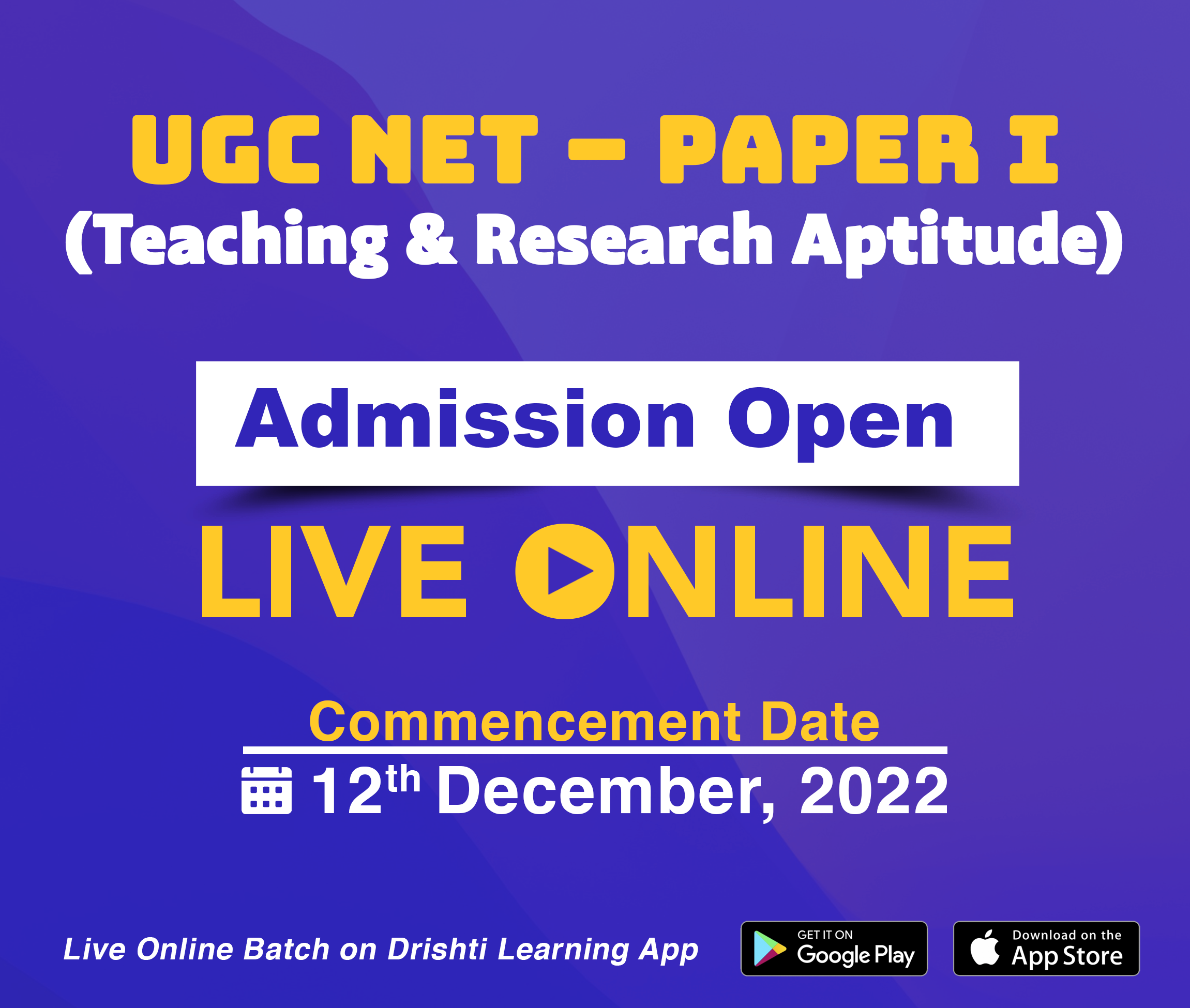
Agriculture
Fertiliser Subsidy
For Prelims: Fertiliser Subsidy, Urea, DAP, Nutrient Based Subsidy (NBS) Scheme
For Mains: Issues Related with Fertiliser Subsidy and the Way Forward.
Why in News?
High government subsidies are leading to excessive use of two fertilisers - Urea and Di-Ammonium Phosphate (DAP).
What is Fertiliser Subsidy?
- About Fertiliser:
- A fertiliser is a natural or artificial substance containing chemical elements (such as Nitrogen (N), Phosphorus (P) and Potassium (K)) that improve growth and productiveness of plants.
- There are 3 basic fertilisers in India - Urea, DAP and Muriate of Potash (MOP).
- About Fertiliser Subsidy:
- The government pays a subsidy to fertiliser producers to allow farmers to buy fertilisers at below-market rates.
- The difference between the cost of production/import of a fertiliser and the actual amount paid by farmers is the subsidy portion borne by the government.
- Subsidy on Urea:
- In India, urea is the most produced, imported, consumed and physically regulated fertiliser of all. It is subsidised only for agricultural uses.
- The Centre pays a subsidy on urea to fertiliser manufacturers on the basis of cost of production at each plant and the units are required to sell the fertiliser at the government-set Maximum Retail Price (MRP).
- The MRP of urea is currently fixed at Rs 5,628 per tonne.
- Subsidy on Non-Urea Fertilisers:
- The MRPs of non-urea fertilisers are decontrolled or fixed by the companies.
- But the government has, in recent times, and especially with the global price surge post the Russia-Ukraine war, brought these fertilisers under the control regime.
- All Non-Urea based fertilisers are regulated under Nutrient Based Subsidy (NBS) Scheme.
- Examples of non-urea fertilisers - DAP and MOP.
- Companies do not sell DAP at more than Rs 27,000 per tonne.
What are the Related Initiatives for Fertilisers?
- Neem Coating of Urea:
- The Department of Fertilizers (DoF) has made it mandatory for all the domestic producers to produce 100% urea as Neem Coated Urea (NCU).
- New Urea Policy (NUP) 2015:
- Objectives of the policy are-
- To maximize indigenous urea production.
- To promote energy efficiency in the urea units.
- To rationalize the subsidy burden on the Government of India.
- Objectives of the policy are-
- Policy on Promotion of City Compost:
- Approved a policy on promotion of City Compost, notified by the Department of Fertilisers (DoF) in 2016 granting Market Development Assistance of Rs. 1500/- for scaling up production and consumption of city compost.
- To increase sales volumes, compost manufacturers willing to market city compost were allowed to sell city compost in bulk directly to farmers.
- Fertilizer companies marketing city compost are covered under the Direct Benefit Transfer (DBT) for Fertilizers.
- Use of Space Technology in Fertilizer Sector:
- DoF commissioned a three-year Pilot Study on “Resource Mapping of Rock Phosphate using Reflectance Spectroscopy and Earth Observations Data” by National Remote Sensing Centre under ISRO, in collaboration with Geological Survey of India (GSI) and the Atomic Mineral Directorate (AMD).
What are the Issues Related to Fertiliser Subsidy?
- Imbalance in Price of Fertilisers:
- The high subsidy on urea and DAP makes them much cheaper for farmers relative to other fertilisers.
- While urea is retailing at a fourth of the price of packed common salt, DAP has also become far cheaper than other fertilizers.
- The prices of the other fertilizers which were decontrolled have gone up which has led the farmers to use more urea and DAP than before.
- Nutrient Imbalance:
- The use of N, P and K in the country has over the last few years sharply deviated from the ideal NPK use ratio of 4:2:1.
- Urea and DAP contain more than 30% of any single nutrient.
- Urea has 46% N, while DAP has 46% P and also 18% N.
- The resulting nutrient imbalance owing to their use, disproportionate to other, more expensive fertilisers, could have implications for soil health, ultimately affecting crop yields.
- Damage to Fiscal Health:
- Fertiliser subsidies are damaging the fiscal health of the economy.
- Subsidized urea is getting diverted to bulk buyers/traders or even non-agricultural users such as plywood and animal feed makers.
- It is being smuggled to neighbouring countries like Bangladesh and Nepal.
Way Forward
- Considering that all three nutrients namely N (nitrogen), P (phosphorus) and K (potassium) are critical to increasing crop yields and quality of produce, the government must necessarily go for a uniform policy for all fertilisers.
- In the long run, NBS itself should be replaced by a flat per-acre cash subsidy that could be used to purchase any fertiliser.
- This subsidy must include value-added and customised products containing not just other nutrients but delivering even nitrogen more efficiently than urea.
UPSC Civil Services Examination, Previous Year Questions (PYQs)
Prelims
Q. With reference to chemical fertilizers in India, consider the following statements: (2020)
- At present, the retail price of chemical fertilizers is market-driven and not administered by the Government.
- Ammonia, which is an input of urea, is produced from natural gas.
- Sulphur, which is a raw material for phosphoric acid fertilizer, is a by-product of oil refineries.
Which of the statements given above is/are correct?
(a) 1 only
(b) 2 and 3 only
(c) 2 only
(d) 1, 2 and 3
Ans: (b)
Exp:
- The Government of India subsidizes fertilizers to ensure that fertilizers are easily available to farmers and the country remains self-sufficient in agriculture production. The same has been achieved largely by controlling the price of fertilizer and the amount of production. Hence, statement 1 is not correct.
- Ammonia (NH3) has been synthesized from natural gas. In this process, natural gas molecules are reduced to carbon and hydrogen. The hydrogen is then purified and reacted with nitrogen to produce ammonia. This synthetic ammonia is used as fertilizer, either directly as ammonia or indirectly after synthesis as urea, ammonium nitrate, and monoammonium or diammonium phosphates. Hence, statement 2 is correct.
- Sulfur is a major by-product of oil refining and gas processing. Most crude oil grades contain some sulfur, most of which must be removed during the refining process to meet strict sulfur content limits in refined products. This is done through hydrotreating and results in production of H2S gas, which is converted into elemental sulfur. Sulfur can also be mined from underground, naturally-occurring deposits, but this is more costly than sourcing from oil and gas and has largely been discontinued. Sulfuric acid is used in the production of both Monoammonium Phosphate (MAP) and Diammonium Phosphate (DAP). Hence, statement 3 is correct.
- Therefore, option B is the correct answer.
Mains
Q1. How do subsidies affect the cropping pattern, crop diversity and the economy of farmers? What is the significance of crop insurance, minimum support price and food processing for small and marginal farmers? (2017)
Q2. In what way could replacement of price subsidy with direct benefit Transfer (DBT) change the scenario of subsidies in India? Discuss. (2015)
Q3. What are the different types of agriculture subsidies given to farmers at the national and at state levels? Critically, analyse the agricultural subsidy regime with reference to the distortions created by it. (2013)

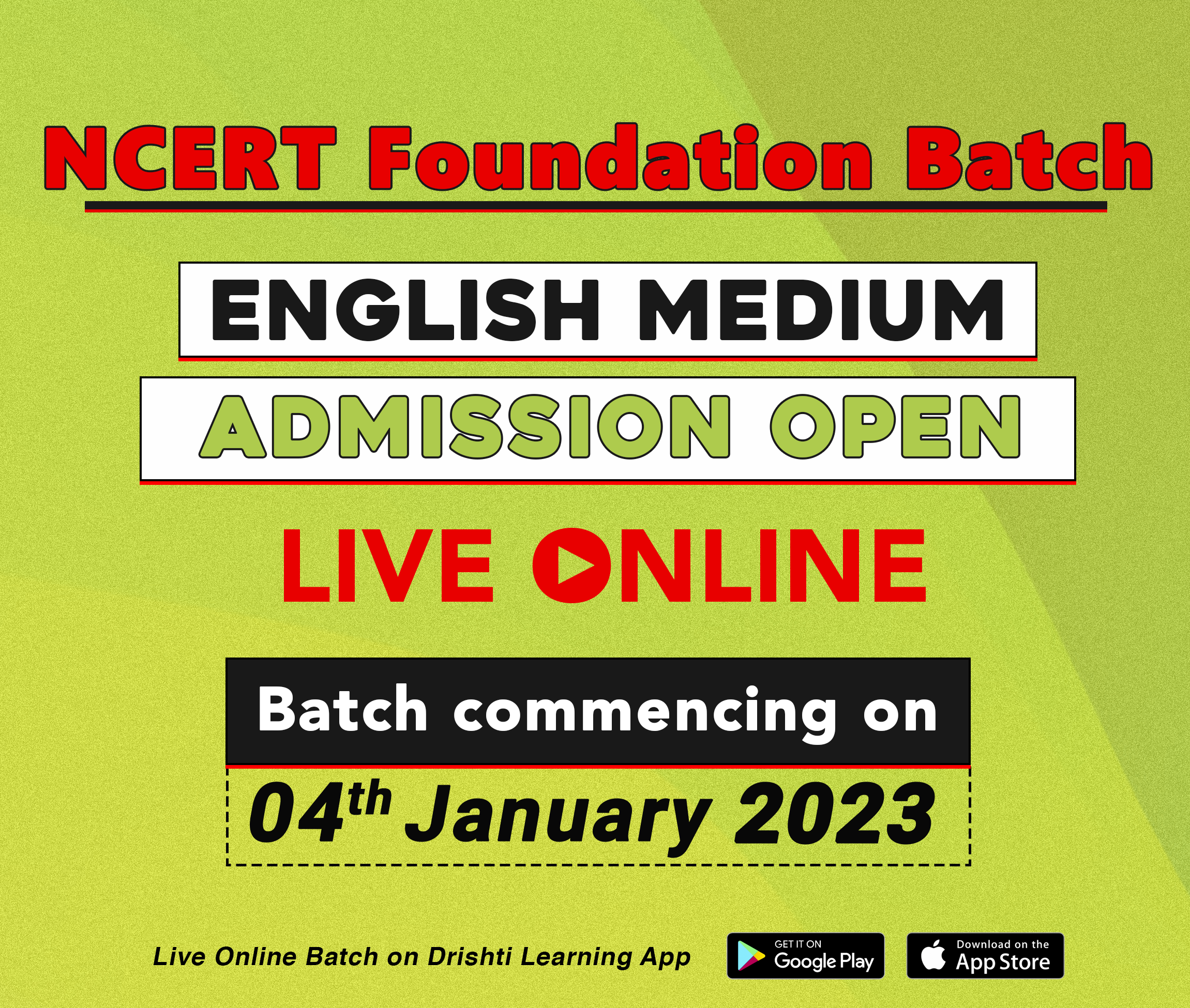
Social Justice
World Malaria Report 2022
For Prelims: Malaria, Efforts to Control Malaria
For Mains: Health, Malaria and its Eradication
Why in News?
Recently, the World Malaria Report 2022 was released by the World Health Organization (WHO).
What are the Highlights of the Report?
- Deaths due to Malaria:
- High-burden malaria countries maintained a strong front against the disease in 2021 despite the Covid-19 pandemic, with cases and deaths stabilising.
- While deaths came down to 619,000 in 2021 from 625,000 in the first year of the pandemic, it remained higher than the pre-pandemic level of 568,000 deaths in 2019.
- High-burden malaria countries maintained a strong front against the disease in 2021 despite the Covid-19 pandemic, with cases and deaths stabilising.
- Trend of Malaria Cases:
- As for Malaria cases, the upward trend continued but at a slower rate — 247 million cases in 2021, compared to 245 million cases in 2020 and 232 million in 2019.
- Scenario of High Burden Countries:
- Among the 11 high-burden countries, five — the Democratic Republic of the Congo, Ghana, India, Niger and the United Republic of Tanzania — recorded a decline in deaths.
- But these countries continued to contribute heavily to the global disease burden.
- Control Tools used by Countries:
- Insecticide-treated bednets (ITNs) are the key vector control tool used by endemic countries.
- Prevalence of Intermittent Preventive Treatment in Pregnancy (IPTP) has remained consistent in 2021 as compared to 2020.
- Hurdles in Ending Malaria:
- Hurdles impeding the process of ending Malaria include - mutating parasites which can evade rapid diagnostic tests, increasing drug resistance and the invasion of an urban-adapted mosquitoes, especially in Africa.
- New tools and fundings to deploy them are urgently needed to help defeat malaria.
- Hurdles impeding the process of ending Malaria include - mutating parasites which can evade rapid diagnostic tests, increasing drug resistance and the invasion of an urban-adapted mosquitoes, especially in Africa.
What is Malaria?
- About:
- Malaria is a life-threatening mosquito borne blood disease caused by plasmodium parasites.
- It is predominantly found in the tropical and subtropical areas of Africa, South America as well as Asia.
- It is preventable as well as curable.
- Spread:
- The parasites spread through the bites of infected female Anopheles mosquitoes.
- After entering the human body, parasites initially multiply within the liver cells and then attack the Red Blood Cells (RBCs) resulting in their rupture.
- There are 5 parasite species that cause malaria in humans, and 2 of these species – Plasmodium falciparum and Plasmodium vivax – pose the greatest threat.
- The parasites spread through the bites of infected female Anopheles mosquitoes.
- Symptoms:
- Symptoms of malaria include fever and flu-like illness, including shaking chills, headache, muscle aches, and tiredness.
- Malaria Vaccine:
- Known by its lab initials as RTS, S but branded as Mosquirix, the vaccine has passed lengthy scientific trials that found it to be safe and reducing the risk of malaria by nearly 40%, the best recorded.
- It was developed by GlaxoSmithKline (GSK) company and approved by the European Medicines Agency in 2015.
- The RTS, S vaccine trains the immune system to attack the malaria parasite (Plasmodium (P.) falciparum, the deadliest species of the malaria parasite).
What are the Initiatives to Curb Malaria?
- Global:
- The WHO has also identified 25 countries with the potential to eradicate malaria by 2025 under its ‘E-2025 Initiative’.
- The WHO’s Global technical strategy for malaria 2016–2030 aims is to reduce malaria case incidence and mortality rates by at least 40% by 2020, at least 75% by 2025 and at least 90% by 2030 against a 2015 baseline.
- India-Specific:
- In India, malaria elimination efforts were initiated in 2015 and were intensified after the launch of the National Framework for Malaria Elimination (NFME) in 2016 by the Ministry of Health and Family Welfare.
- NFME is in line with WHO’s 2016-2030 Malaria Strategy, which guides the WHO Global Malaria Programme (GMP).
- The National Strategic Plan for Malaria Elimination (2017-22) was launched in July 2017 which laid down strategies for the following five years.
- It gives year-wise elimination targets in various parts of the country depending upon the endemicity of malaria.
- Implementation of the High Burden to High Impact (HBHI) initiative was started in four states (West Bengal, Jharkhand, Chhattisgarh and Madhya Pradesh) in July 2019.
- Distribution of Long Lasting Insecticidal Nets (LLINs) to high burden areas has led to a reduction in endemicity in these 4 very high endemic states.
- The Indian Council of Medical Research (ICMR) has established Malaria Elimination Research Alliance-India (MERA-India) which is a conglomeration of partners working on malaria control.
- In India, malaria elimination efforts were initiated in 2015 and were intensified after the launch of the National Framework for Malaria Elimination (NFME) in 2016 by the Ministry of Health and Family Welfare.
UPSC Civil Services Examination, Previous Year Questions (PYQs)
Q. Widespread resistance of malarial parasite to drugs like chloroquine has prompted attempts to develop a malarial vaccine to combat malaria. Why is it difficult to develop an effective malaria vaccine? (2010)
(a) Malaria is caused by several species of Plasmodium
(b) Man does not develop immunity to malaria during natural infection
(c) Vaccines can be developed only against bacteria
(d) Man is only an intermediate host and not the definitive host
Ans: (b)
- Malaria is a life-threatening disease caused by Plasmodium parasites that are transmitted to people through infected female Anopheles mosquitoes.
- The malarial parasite has an extraordinary ability to evade the immune system, which explains the difficulty in developing an effective malaria vaccine.
- RTS,S/AS01 (RTS,S) is the first and, to date, the only vaccine to show partial protection against malaria in young children. Therefore, option (b) is the correct answer.

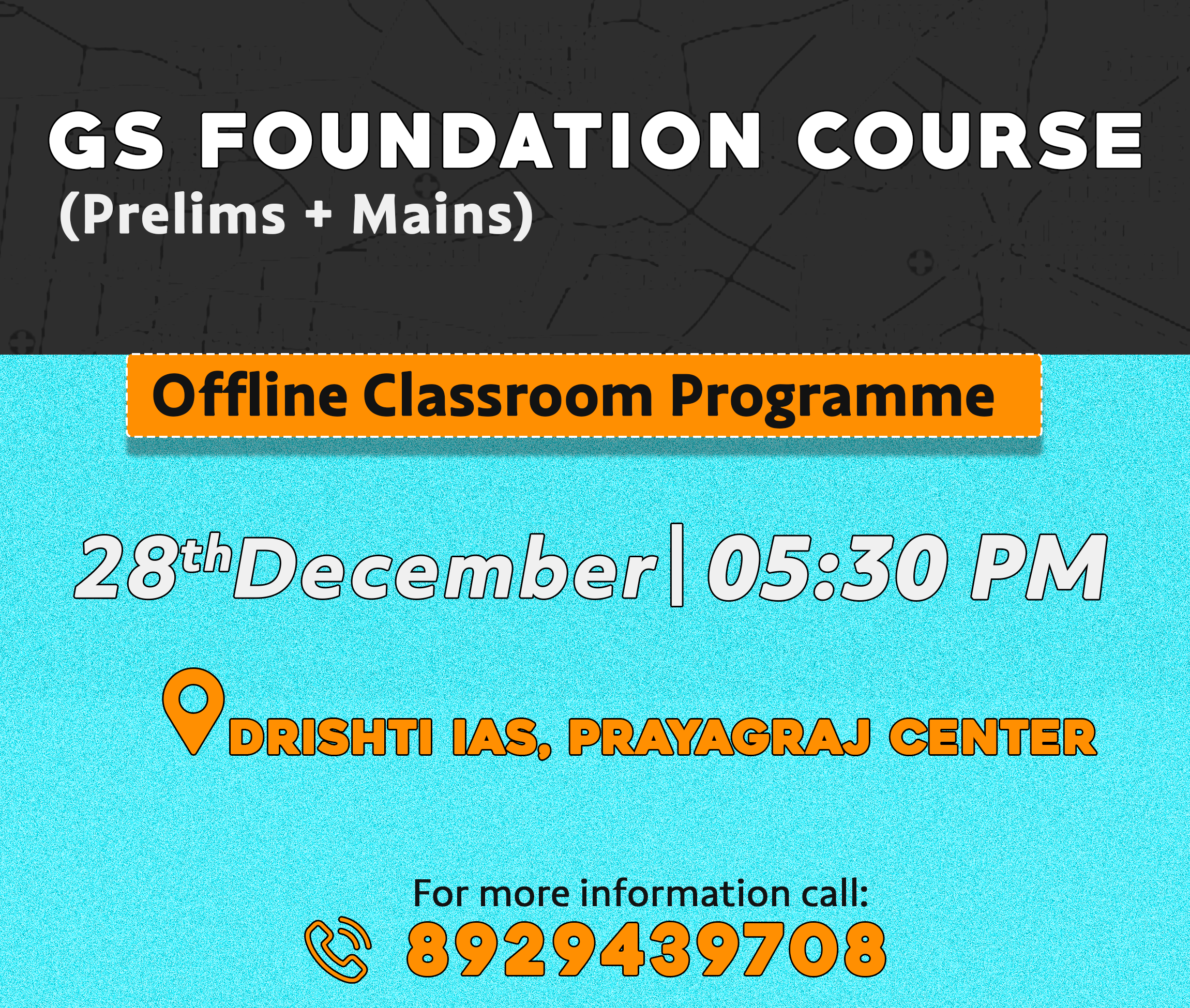
Biodiversity & Environment
NMCG & Namami Gange Programme
For Prelims: NMCG, Namami Gange programme, Arth Ganga, natural farming, SBM 2.0 , AMRUT 2.0, ‘Project Dolphin
For Mains: Significance of Namami Gange Programme in the Rejuvenation of River Ganga
Why in News?
Recently, the Union Minister for Jal Shakti chaired the 10th meeting of the Empowered Task Force (ETF) of National Mission for Clean Ganga (NMCG).
- As part of its flagship Namami Gange programme, the Union government has shifted its focus from improving sanitation to conservation, tourism, and economic development of the Ganga river.
What are the Recent Developments in Ganga Rejuvenation?
- Ministry of Tourism working on a comprehensive plan for development of tourism circuits along Ganga in line with Arth Ganga.
- ‘Arth Ganga’ implies a sustainable development model with a focus on economic activities related to Ganga.
- Exhibitions & Fairs across 75 towns along Ganga River planned as part of Azadi ka Amrit Mahotsav.
- Ministry of Agriculture & Farmers’ Welfare (MoA&FW) undertaking various steps to build organic farming and natural farming corridors along River Ganga
- Eco-agriculture being promoted besides efforts to improve water-use efficiency in Ganga villages by MoA&FW.
- Ministry of Housing and Urban Affairs focusing on mapping of urban drains and management of solid and liquid waste in Ganga towns under SBM 2.0 and AMRUT 2.0
- The Ministry of Environment, Forests and Climate Change mulling scaling up of afforestation activities in the Ganga belt and a detailed plan to take ‘Project Dolphin’ forward is also underway.
What is NMCG?
- About:
- It is being implemented by the National Council for Rejuvenation, Protection and Management of River Ganga also known as the National Ganga Council.
- This mission was established on 12th August 2011 under the Societies Registration Act,1860 as a registered society.
- Objectives:
- The mission incorporates rehabilitating and boosting the existing STPs (Sewage Treatment Plants) and instant short-term steps to curb pollution at exit points on the riverfront in order to check the inflow of sewage.
- To maintain the continuity of the water flow without changing the natural season variations.
- To restore and maintain the surface flow and groundwater.
- To regenerate and maintain the natural vegetation of the area.
- To conserve and regenerate the aquatic biodiversity as well as the riparian biodiversity of the river Ganga basin.
- To allow participation of the public in the process of protection, rejuvenation and management of the river.
What is Namami Gange Programme?
- About:
- Namami Gange Programme is an Integrated Conservation Mission, approved as a ‘Flagship Programme’ by the Union Government in June 2014 to accomplish the twin objectives of effective abatement of pollution and conservation and rejuvenation of National River Ganga.
- It is being operated under the Department of Water Resources, River Development and Ganga Rejuvenation, Ministry of Jal Shakti.
- The program is being implemented by the NMCG and its state counterpart organizations i.e State Program Management Groups (SPMGs).
- In phase 2 of Namami Gange Programme (2021-26), the states will focus on expeditious completion of projects and preparation of bankable Detailed Project Report (DPR) for projects in Ganga tributary towns, cutting down delays.
- Focus is also being given to the revival of small rivers and wetlands.
- For future, each Ganga district is to develop scientific plan and health card for at least 10 wetlands and adopt policies for reuse of treated water and other by products.
- Main Pillars:
- Sewage Treatment Infrastructure
- River-Front Development
- River-Surface Cleaning
- Biodiversity
- Afforestation
- Public Awareness
- Industrial Effluent Monitoring
- Ganga Gram
What are the Other Related Initiatives?
- Ganga Action Plan: It was the first River Action Plan that was taken up by the Ministry of Environment, Forest and Climate Change in 1985, to improve the water quality by the interception, diversion, and treatment of domestic sewage.
- The National River Conservation Plan is an extension to the Ganga Action Plan. It aims at cleaning the Ganga river under Ganga Action Plan phase-2.
- National River Ganga Basin Authority (NRGBA): It was formed by the Government of India in the year 2009 under Section-3 of the Environment Protection Act, 1986.
- It declared the Ganga as the ‘National River’ of India.
- Clean Ganga Fund: In 2014, it was formed for cleaning up of the Ganga, setting up of waste treatment plants, and conservation of biotic diversity of the river.
- Bhuvan-Ganga Web App: It ensures involvement of the public in monitoring of pollution entering into the river Ganga.
- Ban on Waste Disposal: In 2017, the National Green Tribunal banned the disposal of any waste in the Ganga.
UPSC Civil Services Examination, Previous Year Questions (PYQs)
Q. Discuss the Namami Gange and National Mission for Clean Ganga (NMCG) programmes and causes of mixed results from the previous schemes. What quantum leaps can help preserve the river Ganga better than incremental inputs? (2015)

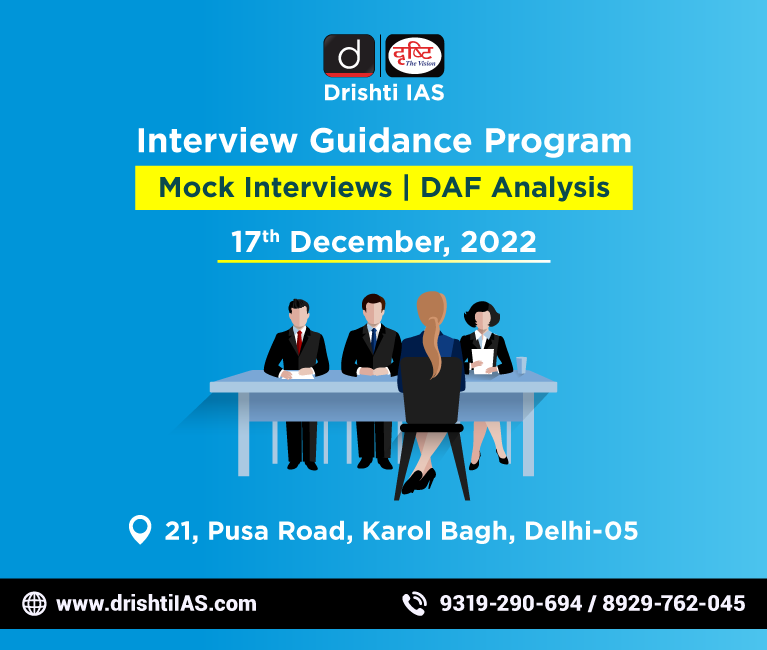
Important Facts For Prelims
HAKUTO-R Moon Mission: Japan
Why in News?
Recently, a Japanese space startup ispace Inc has launched its own private lander M1 to the Moon under its HAKUTO-R mission, from the SpaceX Falcon 9 rocket.
- It is Japan's first-ever lunar mission and the first of its kind by a private company.
What are the Key Points of the Mission?
- About:
- The name HAKUTO-R refers to the white rabbit that Japanese folklore suggests lives on the Moon.
- The M1 lander will deploy two robotic rovers, two-wheeled, orange-sized devices from Japan’s JAXA space agency and a four-wheeled Rover made by the UAE known as the Explorer Rashid, after the Dubai royal family patriarch.
- If the rover Rashid lands successfully, it will be the Arab world's first Moon mission.
- So far only the Us, Russia and China have managed to put a robot on the lunar surface.
- It will also be carrying an experimental solid-state battery made by NGK Spark Plug Co, a Japanese-based spark plug company
- Features:
- It is designed in such a way that it will use minimal fuel to save money and leave more room for cargo.
- It is taking a slow, low-energy path to the Moon, flying 1.6 million km (one million miles) from Earth before looping back and making a planned landing by the end of April.
- Objective:
- It is aimed to search for water deposits before touching down in the Atlas Crater, which lies in the northeastern section of the Moon’s near side and measures more than 87km (54 miles) across and just over 2km (1.2 miles) deep.
- Mission success would also represent a milestone in space cooperation between Japan and the US at a time when China is becoming increasingly competitive and rides on Russian rockets are no longer available in the wake of Russia’s invasion of Ukraine.
- Japan has a contract with NASA to ferry payloads to the Moon from 2025 and is aiming to build a permanently staffed lunar colony by 2040.
What are other Lunar Missions?
- Indian:
- Other Countries:
UPSC Civil Services Examination, Previous Year Questions (PYQs)
Q. Selene-1, the lunar orbiter mission belongs to which one of the following? (2008)
(a) China
(b) European Union
(c) Japan
(d) USA
Ans: (c)






